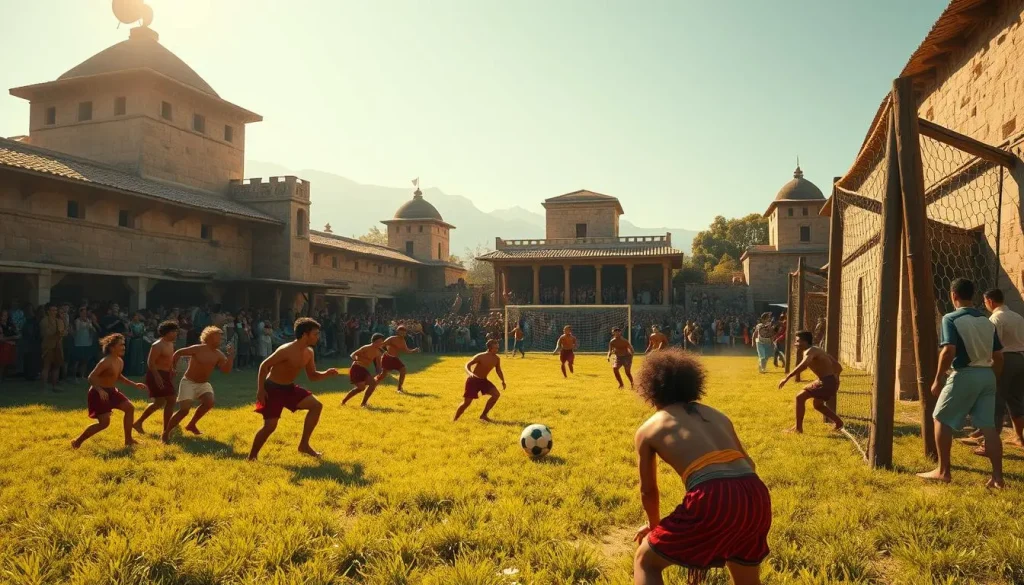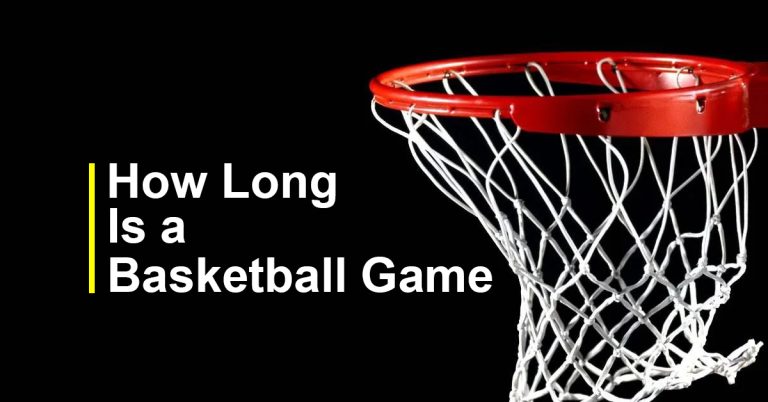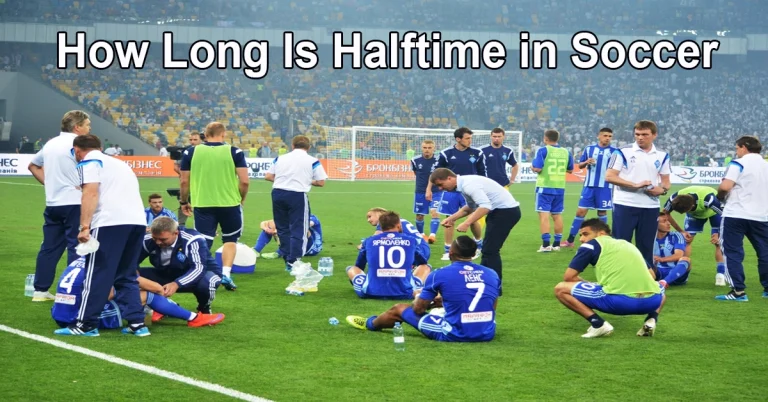Who Invented Soccer? Unveiling the Origins and Global History of Football
The beginnings of soccer history enable any reader to take a most interesting excursion that will illustrate with facts who invented soccer and how this game became so widely admired. Widely known as football in many territories, soccer has captured many millions of people in its unfolding and as simple as it is exciting. The growth of this sport involves a mixture of many cultures, dating back from ball kicking in ancient times and formation of national and latterly international bodies to govern the sport.
Now soccer involves people of all ages and sex, be it during the thrilling action of World Cup soccer matches or the joy of playing in the park. Just a couple of teams and a couple of players and scissors and goals are enough to play. But football is not only a kind of entertainment, but also a sphere that plays an important role in the culture of society and contains a lot of potential. Apart from the pitch, it also teaches important qualities such as teamwork, discipline and sportsmanship and therefore rightly claims to be a cultural phenomenon.
Why people are curious about its origins?
To many, the question of how soccer came into being is fascinating, as it is interesting to know how a simple game turned out to be something that is popular all over the world – Matt. Looking into the origins enables one to understand much about the cultural and historical changes that the game has undergone. Fans, in this case, often ask themselves how soccer became more than just a game but also an instrument for integration to the world and not only the people’s pastime. Furthermore, history of the said sport also sheds light on the different regions and their different styles and rules of play that are later combined together to form football as it is known today.
The distinction between “soccer” and “football”
The words “soccer” and “football” equally translate to the same concepts but in most cases create confusion: mostly for cultural reasons. In most cases, the term “football” applies to a sport involves two teams who in this case try to kick the ball into the goal (this is mostly called soccer). However, countries like the United States and Canada use the term “football” for ball carrying with tackling sports. To reduce this confusion, the word “soccer” came up as a way to refer to the non-contact game that is played with a round ball and is kicked rather than carried. Even though both terms eventually refer to the same sport, geographical equivalence explains the differences observed in their usage.
Ancient Roots of Soccer
People have been playing some version of soccer throughout history especially in many cultures. In China, people played a game known as Cuju where players kicked a leather ball through a net and this has been done for about 2,000 years, making it one of the earliest forms of soccer. Also, the people of ancient Greece and ancient Rome had some form of ball games which were played including kicking and passing, both of which are present in soccer today. Such habits of playing games that involve the ball for fun or competitive purposes was common among peoples from diverse societies such as the Egyptians and the Japanese long before the sport of soccer took shape.
In the medieval ages in Europe, forms of games similar to soccer became more popular with the only drawback being that it was rough and violent as it was mostly played on the roads with little to no rules. The earlier, more chaotic versions of the game consisted of large parties of people trying to get a ball in a net, sometimes entire towns or even cities. The development changed drastically in the nineteenth century especially in the public schools in Britain where there were also more formal rules. Such schools were primarily instrumental in the evolution of soccer from a highly disorganised street game to a proper sport with more regard on team play.
The Invention of Modern Soccer
After soccer had gained popularity, an important historical milestone was the creation of The Football Association in the year 1863, which paved the way for soccer becoming professionalised. The FA was also the first in the world to codify collection of rules thus commencing the process of bringing order within the chaos that was soccer. This included playing time and team numbers, dimensions of the pitch and methods of restarting the game which were all very important rules. More importantly, these common rules were the distinguishing feature that segregated the early soccer from rugby since soccer was played with the feet while in rugby, the ball could be handled.
This distinctiveness not only differentiated the two sports but also contributed to fast development of soccer around the world. In apprehending the significance of the emergence of the FA and rule-books in history, fans can understand the process of creation of characteristics that are now appreciated in contemporary soccer.
Global Spread of Soccer
After soccer had gained popularity, an important historical milestone was the creation of The Football Association in the year 1863, which paved the way for soccer becoming professionalised. The FA was also the first in the world to codify collection of rules thus commencing the process of bringing order within the chaos that was soccer. This included playing time and team numbers, dimensions of the pitch and methods of restarting the game which were all very important rules. More importantly, these common rules were the distinguishing feature that segregated the early soccer from rugby since soccer was played with the feet while in rugby, the ball could be handled.
This distinctiveness not only differentiated the two sports but also contributed to fast development of soccer around the world. In apprehending the significance of the emergence of the FA and rulebooks in history, fans can understand the process of creation of characteristics that are now appreciated in contemporary soccer.
If you want to know about Team Formation, read this article. It will explain how many soccer players are on the field?
The Debate: Who Invented Soccer?
The history of the development of soccer is rather complex due to the different cultural influences it has and explaining it based on one particular person, place or timezone becomes quite difficult. Historical accounts include numerous peoples who partook in something similar to soccer, including very early civilisations in China, Greece, or Meso-america, each contributing some form of evolution in the sport.
To illustrate, kicking a ball into a net was included in the Han period cuju, while a similar kicking based team game known as episkyros was played in ancient Greece. It was these earlier versions of football that began to spread changes all across Europe after-which each country modified the ways of playing. But an important change was made in England by the formulation of soccer rules in 1863. This complex picture of influences endorses the view that soccer has been evolving into a global shared activity wherein both the common past of the game and the constant interrelation of different cultures that shapes its further development is appreciated.
Modern Soccer and its Global Impact
The journey of soccer into the present style of play is remarkable looking at several factors such as commercialisation and internationalisation. In addition, the establishment of professional leagues and the new television financing have propelled soccer into a multi billion dollar business where players and funds come from anywhere. Events such as the FIFA World Cup and UEFA Champions League have not only increased the success of the game but have made soccer a part of the world order influenced by culture-sand uniting different societies.
In addition, there is a socio-political and economic aspect associated with the history of soccer that can also be called soccer diplomacy, with clubs and players often involved in social issues and trying to effect change through their platform. This synergistic development of soccer and society is rather telling about the impact of the sport outside the pitch and gives more credibility to the level of professional sports as an effective tool influencing culture, economy and international relations.
Conclusion
The invention of soccer is a more complex theme and finds itself in an exhaustive number of cultural contexts. This is rather understandable from the perspective of defining the composer of the game, which normally does not encompass religions and civilisations.
The factors surrounding the question of who invented soccer are often resolved by referring to specific people or regions, which should never be the case because individualism doesn’t exist, and indeed, the game as we know it has its roots in a number of civilisations and eras with its development being collaborative and not being the brainchild of one person only. And here we come to less known facts in history.
The archaic leisure pursuits featuring the ball in the country of China and Greece or the eventual systematisation of the principles and regulations in the 1800s England have all been indispensable on every step in developing the sport we know now. The strong relationship of soccer and soccer enthusiasts is shored further than the playing field which encompasses you and the fans, rather it binds more fans – billions of them. Its considerable success as an international sport, where the country was heard through the soccer but did not speak the language, was due to its ability to cross boundaries of language and culture, geography, creation and conservation of the attitude and feel for the society of today.










